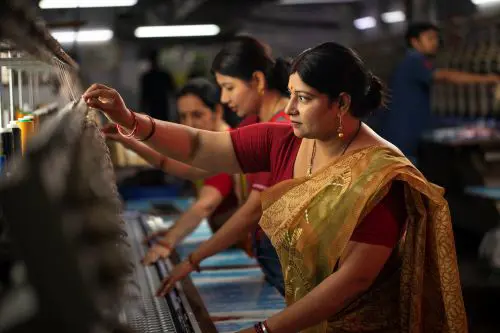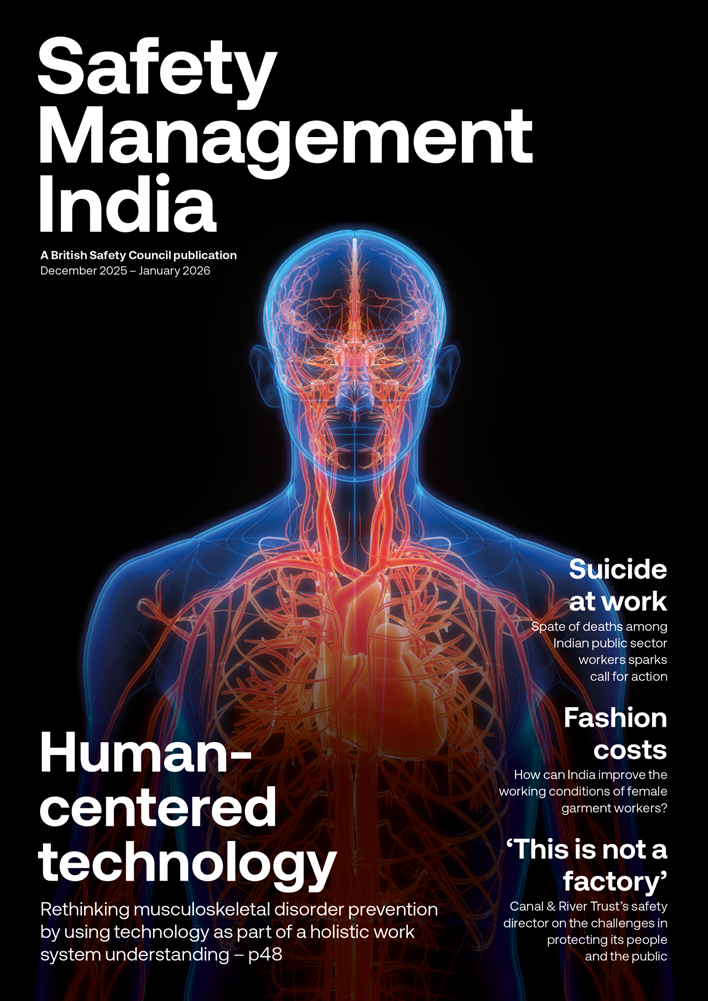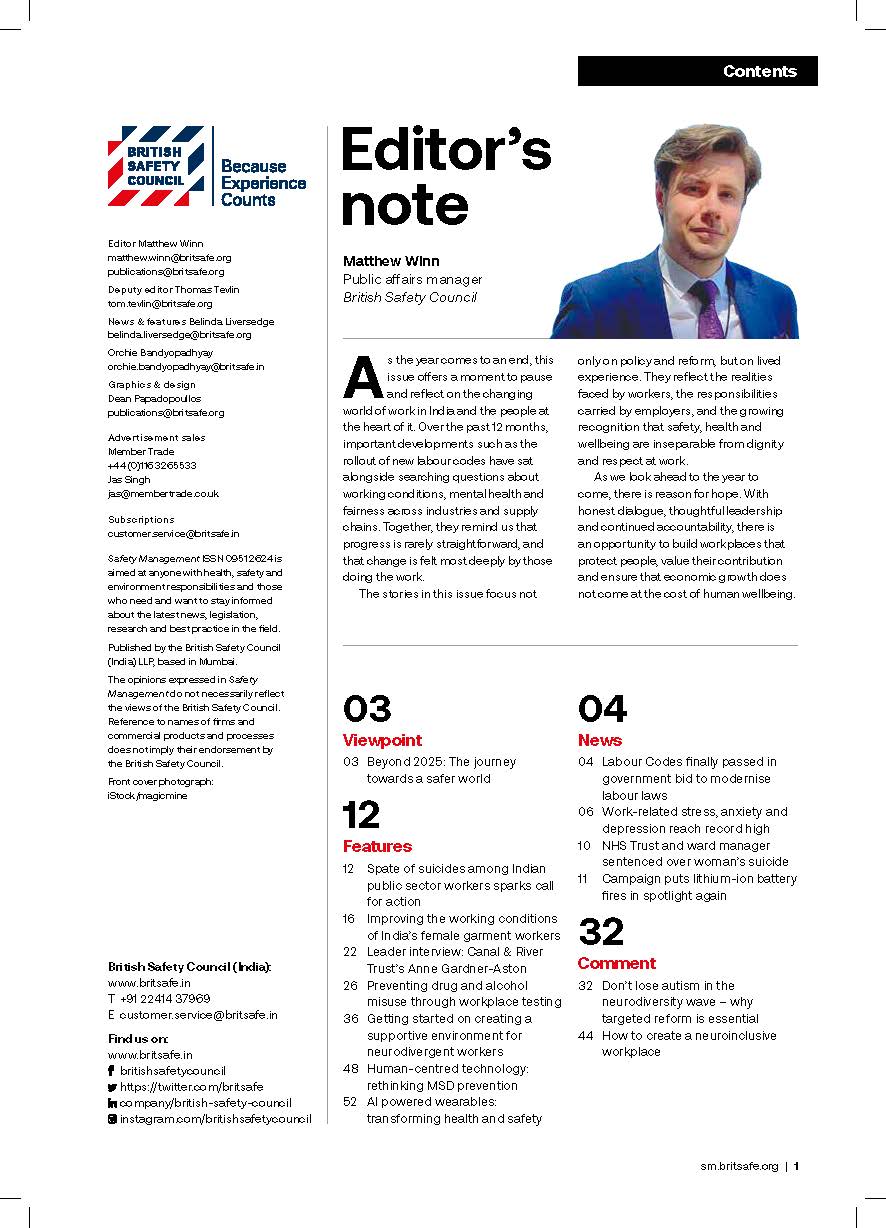Almost a year after the rape and murder of a young female doctor at a Kolkata hospital horrified the nation, commentators say progress has been painfully slow in improving the safety and security of many hospitals and doctors’ living accommodation.
Features
India’s medical sector – ‘doctors still at risk of violence’
After the brutal rape and murder of a young female doctor at RG Kar Medical College and Hospital in Kolkata, West Bengal, in August 2024, by a volunteer working at the hospital, India witnessed a nationwide wave of anger from medical professionals and the public, prompting the government and healthcare establishments to pledge urgent reforms to make hospitals and other healthcare premises safer for staff, particularly female doctors. Security audits were ordered. Directives were issued. Political leaders assured the public that they were taking all the necessary measures to prevent violence against the country’s medical personnel.
The Supreme Court, when considering a legal petition in August 2024 calling for the Union Government to take action following the rape and murder of the junior doctor in Kolkata, ordered the Union Health Secretary to ensure states immediately implemented basic short-term measures to deal with doctors’ concerns about personal safety at work.

The Supreme Court gave the Union Government a two-week deadline to ensure that all State Governments were taking action to ensure local health authorities and police forces were immediately implementing a variety of measures to more effectively protect healthcare professionals from violence, aggression and sexual assault from patients and the public.
The instruction aimed to ensure that all hospitals nationwide were immediately taking practical steps to protect medical staff from violence until a National Task Force (NTF) was able to develop a formal protocol on the prevention of violence to hospital workers that could be adopted by all health authorities in India. While hearing the petition in August 2024, the Supreme Court had simultaneously ordered the Union Government to establish the task force to investigate and formulate measures to reduce the risk of violence, aggression and sexual assault to workers in healthcare establishments like hospitals.
High-profile developments
Following these high-profile developments – which were widely reported in the media – many commentators expected that government-run hospitals would take urgent steps to protect doctors from violence, sexual harassment and sexual assault. However, although a number of hospitals have taken measures to improve the safety of doctors and other medical staff, campaigners say doctors continue to be exposed to the threat of violence and sexual assault due to unsafe, overcrowded and poorly maintained hospital campuses.
In June this year, Delhi’s lieutenant governor VK Saxena ordered Delhi’s Municipal Corporation’s Public Works Department (PWD) and Delhi Police to build new staff accommodation, remove unauthorised structures and ensure the safety of doctors at the city’s Maulana Azad Medical College (MAMC) and three hospitals located on the MAMC campus: Lok Nayak Hospital, Govind Ballabh Pant Hospital and the Guru Nanak Eye Centre. This followed a meeting reviewing the security arrangements, infrastructure and amenities at MAMC and the three associated hospitals on its campus.
During the meeting, serious issues – such as lapses in the security of medical students and doctors and an acute shortage of accommodation for medical students and doctors – came to light. Officials stated that in the key public, State Government-run hospitals in Delhi, civil infrastructure is crumbling and critical space has been taken up by illegal encroachments.
The meeting also reportedly heard that many of the exiting accommodation blocks are in a dilapidated condition, lighting at night in and around the accommodation areas is poor, and there is a shortage of security personnel to ensure the safety of doctors and medical students living at the MAMC campus.
However, at the core of the problem is overcrowding in accommodation blocks and rest rooms used by doctors and medical students.
The dean, or head, of MAMC said the hospital complex, which was established in 1958, was designed to accommodate 1,200 medical students. Today, however, there are currently over 3,200 medical students living on the site. The lack of space has led to appalling overcrowding, with six to seven resident doctors crammed into rooms built for two, often lacking space even for a study table. Many resident doctors are now forced to rest in hospital corridors or outside nursing stations.
Unfortunately, this mirrors the situation that existed at RG Kar Medical College and Hospital in Kolkata, where the young female doctor who was raped and murdered did not have access to a secure room to rest and sleep while on-call. Instead, the 33-year-old had been resting in a seminar hall when she was violently attacked with fatal consequences.
Illegal encroachments
During the meeting about conditions at Delhi’s key public hospitals, officials reportedly revealed that Delhi Municipal Corporation’s Public Works Department is unable to create additional space for new staff accommodation at MAMC because land allocated for expansion of the hospital’s housing blocks has been occupied by illegal encroachers who live and work on parts of the campus.
However, commentators say that although both hospital management and Delhi Municipal Corporation have mismanaged the available accommodation and associated infrastructure at MAMC, other factors have constrained the ability of the authorities to tackle the space and safety crisis at Delhi’s key government-run hospitals and associated medical colleges.
Historical monuments protected by the Archaeological Survey of India (ASI) near the MAMC campus further limit the available land, as these heritage structures cannot be altered without
ASI’s permission.
The dean of MAMC revealed that in the financial year 2023–24, the ASI was granted a three-month window to carry out necessary repairs to buildings at the MAMC campus, but the work was never started because the then government failed to release the required funds. As a result, MAMC was forced to undertake minor repairs paid for through a crowdfunding exercise, the dean said.
As a result, the MAMC campus now poses a serious risk to the safety of doctors and medical students living at the site, say doctors. The buildings are now extremely dilapidated, with chunks of plaster and concrete often falling from them, therefore threatening the safety and lives of students and doctors, the official said.
The toilets, too, are reportedly unhygienic and unusable, and the strain on nearby sewer lines has been aggravated by the illegal occupation of sections of the campus.
Extent of the encroachment crisis
A presentation during the review meeting revealed the extent of the encroachment crisis. Illegal flats, religious structures, shops, pathology laboratories, akharas (residential centres for religious and martial arts training), ashrams (spiritual retreats) and even schools have illegally been established on land in Delhi allotted to MAMC and other State government-owned medical institutions by the city’s Land and Development Office.
Four illegal informal shanty town settlements, known as jhuggis, have encroached over 25 acres of land alone at MAMC. Also, a significant amount of State government-owned accommodation at MAMC has been illegally occupied by retired employees.
At the meeting, officials also warned that illegal land use on and near the MAMA campus has led to a surge in criminal activity in the nearby area. Delhi Police warned that illegal liquor sales and drug rackets are operating from sites within the encroachment areas at the site.
The management of the three hospitals in question – Lok Nayak Hospital, GB Pant Hospital and Guru Nanak Eye Centre – added that encroachments by illegal occupiers and illegal parking have clogged the approach roads to the three medical centres, making it difficult for vehicles like ambulances to access the three sites.
Expressing shock at the state of affairs at the biggest medical complex in Delhi, the city’s lieutenant governor VK Saxena asked Delhi’s Municipal Corporation’s PWD to immediately begin drawing up plans and financial estimates to create accommodation and associated infrastructure to house at least 4,000 medical students and doctors. He also asked hospital authorities and land-owning agencies to immediately conduct a survey of land allocated to medical institutions on the MAMC campus in order to begin to identify and attempt to remove the illegal encroachments.
The PWD was also ordered to immediately begin renovation and repair work on the existing hostels and to improve security at the campus. This includes installing high intensity LED streetlights across the campus to improve safety and visibility after dark and boosting the number of security personnel.
Dr Aman Jain, a member of the Resident Doctors’ Association (RDA) at MAMC and the associated Lok Nayak Hospital, GB Pant Hospital and Guru Nanak Eye Centre, said: “The safety standards have improved after the RG Kar incident – new [security] guards have been appointed, high mast lights installed, the number of checkpoints has increased and posters enlightening the general public about the laws that protect doctors and the punishments and fine penalties for being violent against doctors have been pasted throughout the hospital premises in three different languages. But, still there’s a lot of scope for further improvements.”
Dr Jain added that although abusive behaviour and assaults against doctors and other staff are thankfully quite infrequent in the various hospitals on the MAMC campus, the hospital authorities, police and the Delhi government should be striving to eliminate them completely. “We cannot just sit and wait for something big to happen to bring in the necessary changes,” he warned. “But it’s high time that MAMC and the associated hospitals get a basic infrastructure that is required for smooth workflow and obviously the wellbeing of patients as well as doctors.”
Dr Jain added that members of the RDA at MAMC were in continuous dialogue with the dean of MAMC and the office of Delhi’s chief minister (CM), Rekha Gupta. “A team headed by vice president of RDA at MAMC, PG [doctor] residents and MBBS [Bachelor of Medicine, Bachelor of Surgery] students, along with the dean, met the CM and other officials at the Secretariat to apprise them of the issues that doctors and students are facing on a day-to-day basis because of the lack of basic infrastructure,” explained Dr Jain.
Further steps
However, Dr Jain added that further steps are still required to ensure the safety of doctors in and around the hospital premises, and the RDA MAMC is therefore calling for a number of specific measures to be implemented at the MAMC campus. These are:
- The ‘one patient, one attendant’ rule should be strictly implemented, to help reduce the risk
of violence towards medical staff. The rule means that only one family member or friend can be present with the patient during non-visiting hours. - Entry into the hospital in non-emergency situations – for example, by family members to visit patients – should be restricted to people carrying an Aaadhar national identification card, both as a general security measure and so they can be identified, recorded and traced, in the event of a violent incident.
- The number of security personnel should be increased, particularly in high-risk areas such as casualty and emergency departments.
- A doctors’ duty room should be provided in all departments of the hospital, offering basic rest facilities such as a table, chair, bed and a clean washroom as doctors in most departments don’t have a separate washroom and are forced to use facilities provided for patients and visitors.
- New hostels for both doctors and students must be urgently and immediately constructed.
- Several entry points to the hospital campus need to be closed permanently to improve security – especially the gate near the Anandi hostel where female doctors and students live and the gate that connects the campus to the nearby Mirdard residential area.
- Unauthorised shops and people should be removed from the campus.
- The CCTV system must be extended to fully cover the campus and steps must be taken to ensure it is working at all times.
AIIMS Delhi takes action on doctor safety
Meanwhile, in a separate move, the All India Institute of Medical Sciences (AIIMS) Delhi, a public medical research university and hospital in the city, has appointed Dr Shailendra Kumar, a professor of anaesthesiology, as the officer responsible for security at the hospital and medical campus. The move is designed to streamline coordination on security matters between the hospital’s security department and patients, the faculty of medicine and students at the institute.
In fact, representatives of medical staff say that the safety and security infrastructure in place to protect doctors at AIIMS Delhi is a lot better than at many other government-owned hospitals.
“The campus is well-patrolled, access is controlled, and both staff and visitors are subject to security protocols that ensure a safer working environment for healthcare professionals,” says former president of AIIMS RDA Dr Indra Shekhar Prasad.
Doctors’ associations add that because AIIMS Delhi falls under the jurisdiction of the Union Government’s Ministry of Health and Family Welfare, it receives higher funding for security measures and has administrative autonomy over its sites, which enables the hospital to respond more rapidly to safety concerns.
“Incidents of assault against doctors are rare and always met with swift internal investigation,” says another doctor at AIIMS Delhi.
However, the RDA for AIIMS Delhi has raised the issue of long working hours and a shortage of hostels for doctors and medical students in several meetings with the Union Government’s Health Ministry. “The ministry must be working on our demands to get things right,” adds Dr Prasad.
Meanwhile, outside the national capital, doctors, especially women, continue to face unsafe and disrespectful working conditions on hospital campuses.
For example, three major doctors’ associations recently held a joint protest in Raipur in the state of Chhattisgarh after a female doctor at Narayanpur District Hospital was allegedly abused and mistreated by an Additional Collector – a senior civil servant for the local district. The collector had reportedly arrived at the hospital with his child, who was suffering from a mild case of diarrhoea, and allegedly demanded the doctor immediately stop treating other, more seriously ill patients and instead examine his child.
When the doctor informed him his child’s condition was stable and he would have to wait
for treatment, he allegedly verbally abused her, calling her a “do kaudi ke doctor” (‘a doctor worth two pennies’) and threatened to use his local political influence to get her fired or transferred from the hospital.
Following the incident, the various doctors’ associations wrote to the state’s health minister, demanding a public apology from the collector and an assurance he would face disciplinary action. They also called for the introduction of clear guidelines for hospitals and patients to follow to ensure the respect, dignity and safety of doctors at work, and repeated calls for doctors to have priority access to safe local accommodation.
“People need to have a serious re-think about how they view and treat the healthcare professionals whose entire job is to keep them alive and well,” said one doctor in Chhattisgarh.
FEATURES

The price of fast fashion is not pretty
By Orchie Bandyopadhyay on 11 December 2025
The largely female workforce in India’s garment manufacturing industry faces long hours, low wages and poor working conditions, and campaigners say it is time the Indian government and international clothing brands took tougher action to improve working conditions, pay and employment rights.

Suicide at work: a major problem in India
By Orchie Bandyopadhyay on 11 December 2025
Recent reports of suicides among workers ranging from police officers to electoral roll officials have prompted calls for employers and government agencies to do more to both reduce excessive workloads and provide better mental health support at work.



